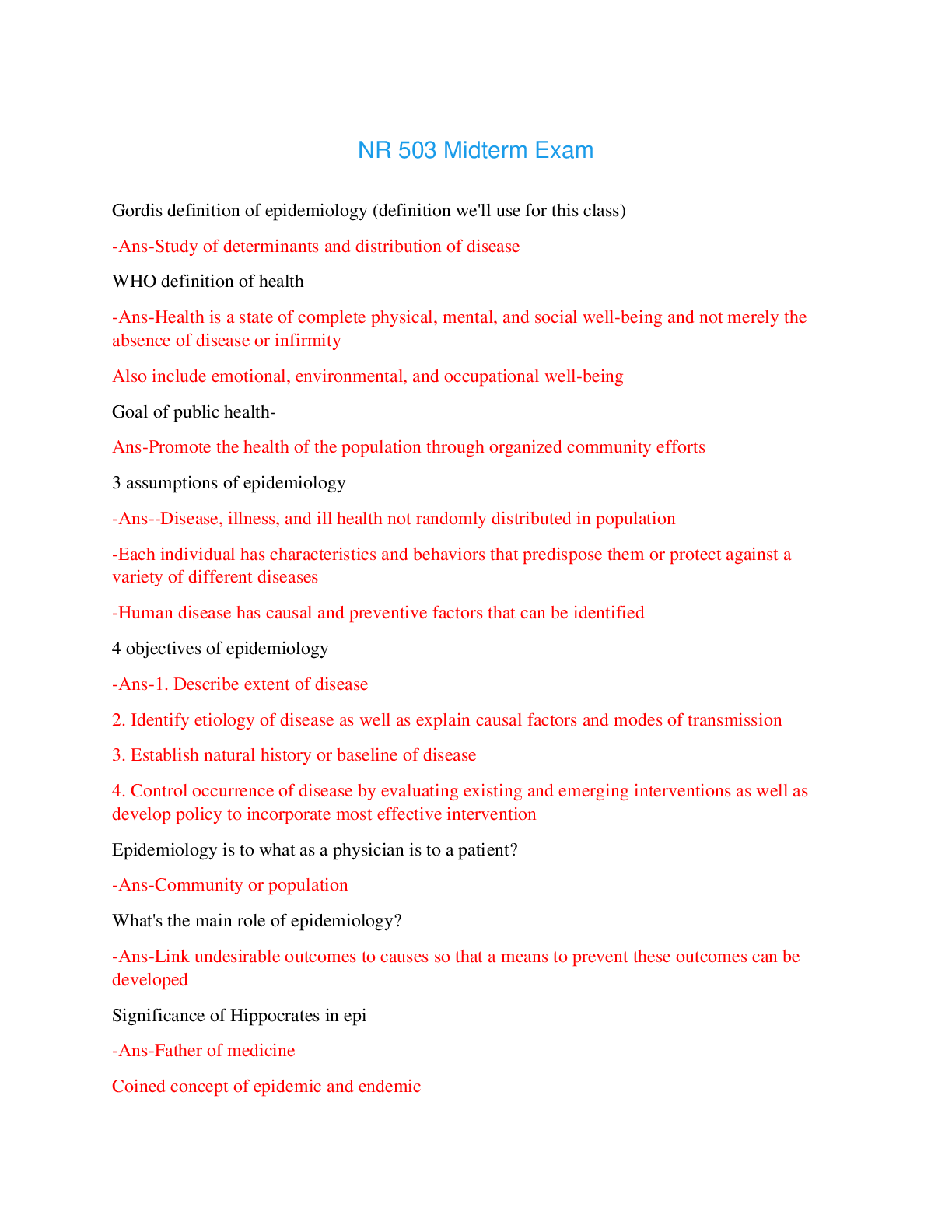NCLEX Question Trainer Test 2 Real Exam Questions & Answers, Rated A+
Document Content and Description Below
NCLEX Question Trainer Test 2 Real Exam Questions & Answers, Rated A+,The nurse is supervising care given to a group of patients on the unit. The nurse observes a staff member entering a patient's ro... om wearing gown and gloves. The nurse knows that the staff member is caring for which of the following patients? 1. An 18-month-old with respiratory syncytial virus. 2. A 4-year-old with Kawasaki disease. 3. A 10-year-old with Lyme's disease. 4. A 16-year-old with infectious mononucleosis. Strategy: Think about each answer. - ANS: 1 (1) correct-acute viral infection; requires contact precautions; assign to private room or with other RSV-infected children (2) acute systemic vasculitis in children under 5; standard precautions (3) connective tissue disease; standard precautions (4) standard precautions The nurse is assessing a client who has had a spinal cord injury. Which of the following assessment findings would suggest the complication of autonomic dysreflexia? 1. Urinary bladder spasm pain. 2. Severe pounding headache. 3. Profuse sweating. 4. Tachycardia. 5. Severe hypotension. 6. Nasal congestion. - ANS: 2, 3, 6 (1) may be the cause of autonomic dysreflexia due to overfilling of the bladder, but pain is not perceived (2) correct—severe headache results from rapid onset of hypertension (3) correct—especially of forehead (4) pulse will slow (5) BP will increase (6) correct—also causes piloerection (goose flesh) An adolescent is scheduled for a below-knee (BK) amputation following a motorcycle accident. The nurse knows preoperative teaching for this client should include which information? 1. Explain that the client will walk with a prosthesis soon after surgery. 2. Encourage the client to share feelings and fears about the surgery. 3. Take the informed consent form to the client and ask the client to sign it. 4. Evaluate how the client plans to complete schoolwork during hospitalization. Strategy: Remember therapeutic communication. - ANS: 2 (1) fails to recognize his immediate concerns (2) correct—discussing his feelings and fears is important in dealing with his anxiety due to a change in body image and functioning (3) client is underage; parents will need to sign the permit (4) is more appropriate for the postoperative period of time than for the preoperative period A client at 16 weeks gestation undergoes an amniocentesis. The client asks the nurse what the health care provider will learn from this procedure. The nurse's response will be based on an understanding that which condition can be detected by an amniocentesis? 1. Tetralogy of Fallot. 2. Talipes equinovarus. 3. Hemolytic disease of the newborn. 4. Cleft lip and palate. - ANS: 3 (1) cardiac abnormality detected at birth; pulmonary stenosis, ventricular septal defect, overriding aorta, hypertrophy of right ventricle (2) congenital deformity detected at birth; foot twisted out of normal position, clubfoot (3) correct—maternal antibodies destroy fetal RBCs; bilirubin secreted because of hemolysis (4) congenital deformity detected at birth, midline fissure or opening into lip and/or palate The nurse evaluates the nutritional intake of a 16-year-old girl at a camp for adolescents. The girl eats all of the food provided to her at the camp cafeteria. Each of the day's three meals contains foods from all areas of the food pyramid, and each meal averages about 900 calories and 3 mg of iron. The girl has been menstruating monthly for about two years. Which of the following descriptions, if made by the nurse, BEST describes the girl's intake if her weight is appropriate for her height? 1. Her diet is low in calories and high in iron. 2. Her diet is low in calories and low in iron. 3. Her diet is high in calories and low in iron. 4. Her diet is high in calories and high in iron. - ANS: 3 women: 1,200-1,500 kcal/day (men: 1,5001,800 kcal/day) women: 15 mg/day of iron (men 10 mg/day); pregnancy 30 mg/day 900 x 3 = 2,700 calories/day 3 mg x 3 = 9 mg/day of iron A client has returned from surgery with a fine, reddened rash noted around the area where Betadine prep had been applied prior to surgery. Nursing documentation in the chart should include 1. the time and circumstances under which the rash was noted. 2. the explanation given to the client and family of the reason for the rash. 3. notation on an allergy list and notification of the doctor. 4. the need for application of corticosteroid cream to decrease inflammation. Strategy: Answers are implementation. Determine the outcome of each answer. Is it desired? - ANS: 3 (1) would be noted, but is not as high a priority (2) inappropriate (3) correct-suspected reaction to drugs should be reported to the doctor and noted on list of possible allergies (4) inappropriate A client who is receiving a blood transfusion experiences a hemolytic reaction. The nurse would anticipate which of the following assessment findings? 1. Hypotension, backache, low back pain, fever. 2. Wet breath sounds, severe shortness of breath. 3. Chills and fever occurring about an hour after the infusion started. 4. Urticaria, itching, respiratory distress. - ANS: 1 (1) correct-signs and symptoms of a hemolytic reaction include chills, headache, backache, dyspnea, cyanosis, chest pains, tachycardia, and hypotension (2) circulatory overload (3) febrile or pyrogenic reaction (4) allergic reaction [Show More]
Last updated: 2 weeks ago
Preview 1 out of 35 pages
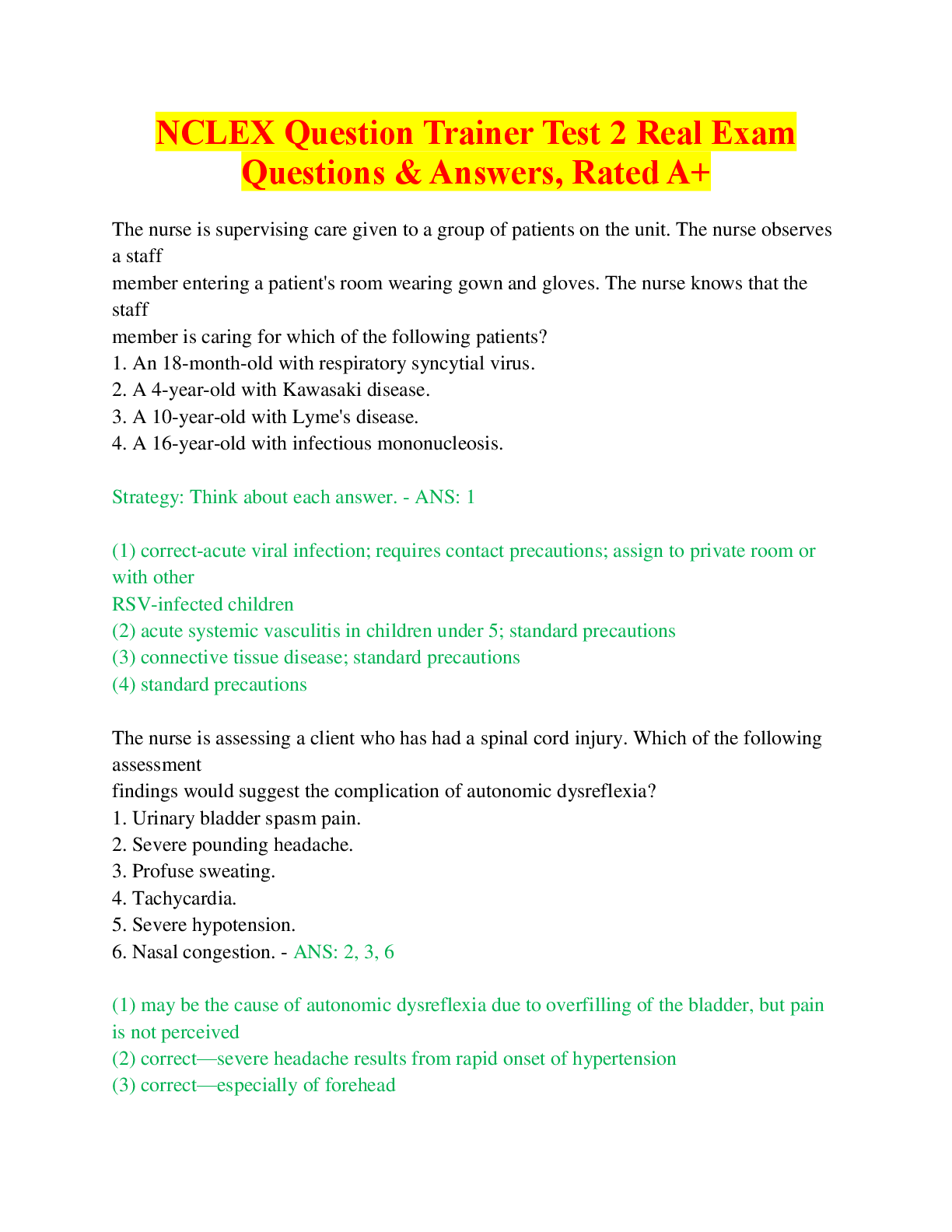
Buy this document to get the full access instantly
Instant Download Access after purchase
Buy NowInstant download
We Accept:

Reviews( 0 )
$14.50
Can't find what you want? Try our AI powered Search
Document information
Connected school, study & course
About the document
Uploaded On
Jul 22, 2025
Number of pages
35
Written in
Additional information
This document has been written for:
Uploaded
Jul 22, 2025
Downloads
0
Views
2


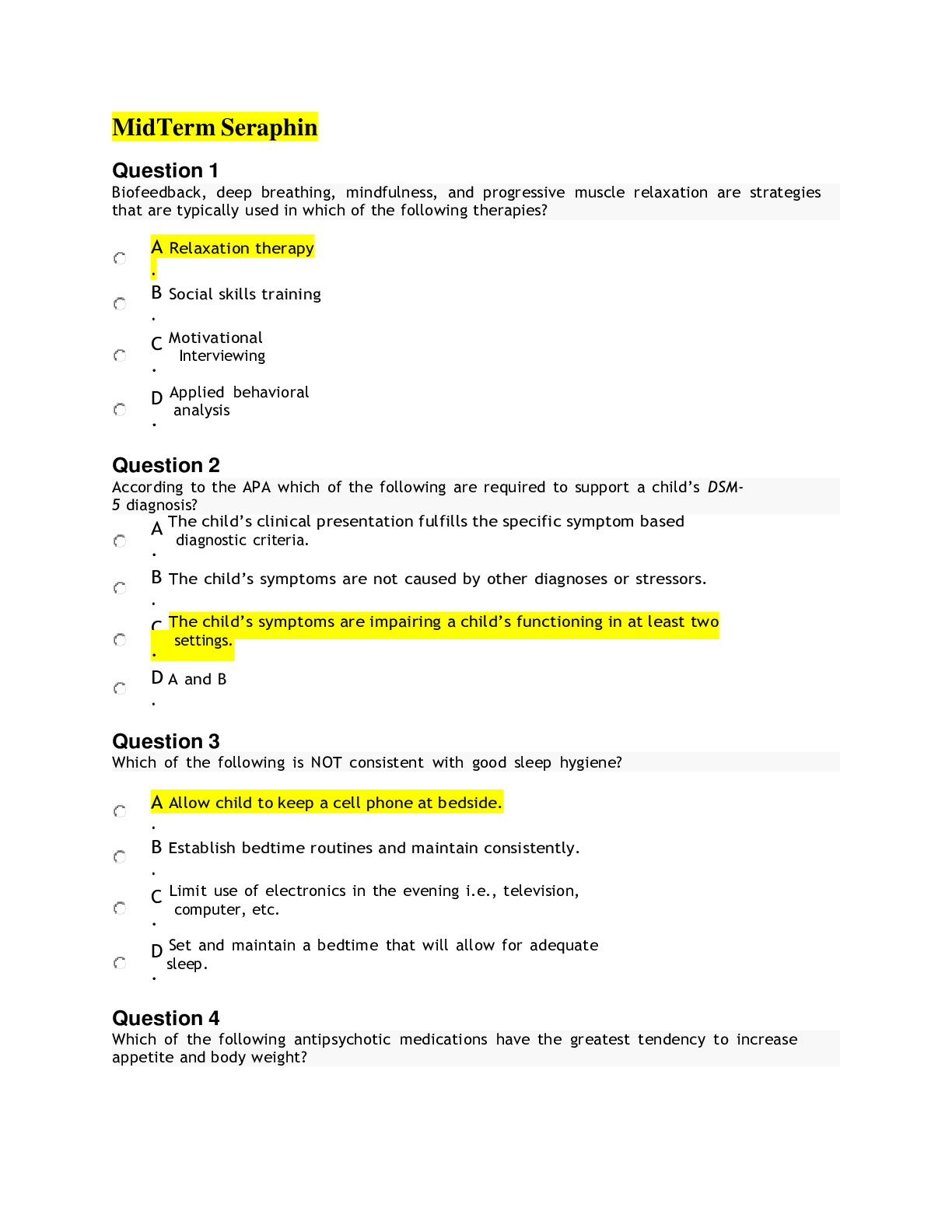
 Pediatrics Practice Exam-Answered.png)
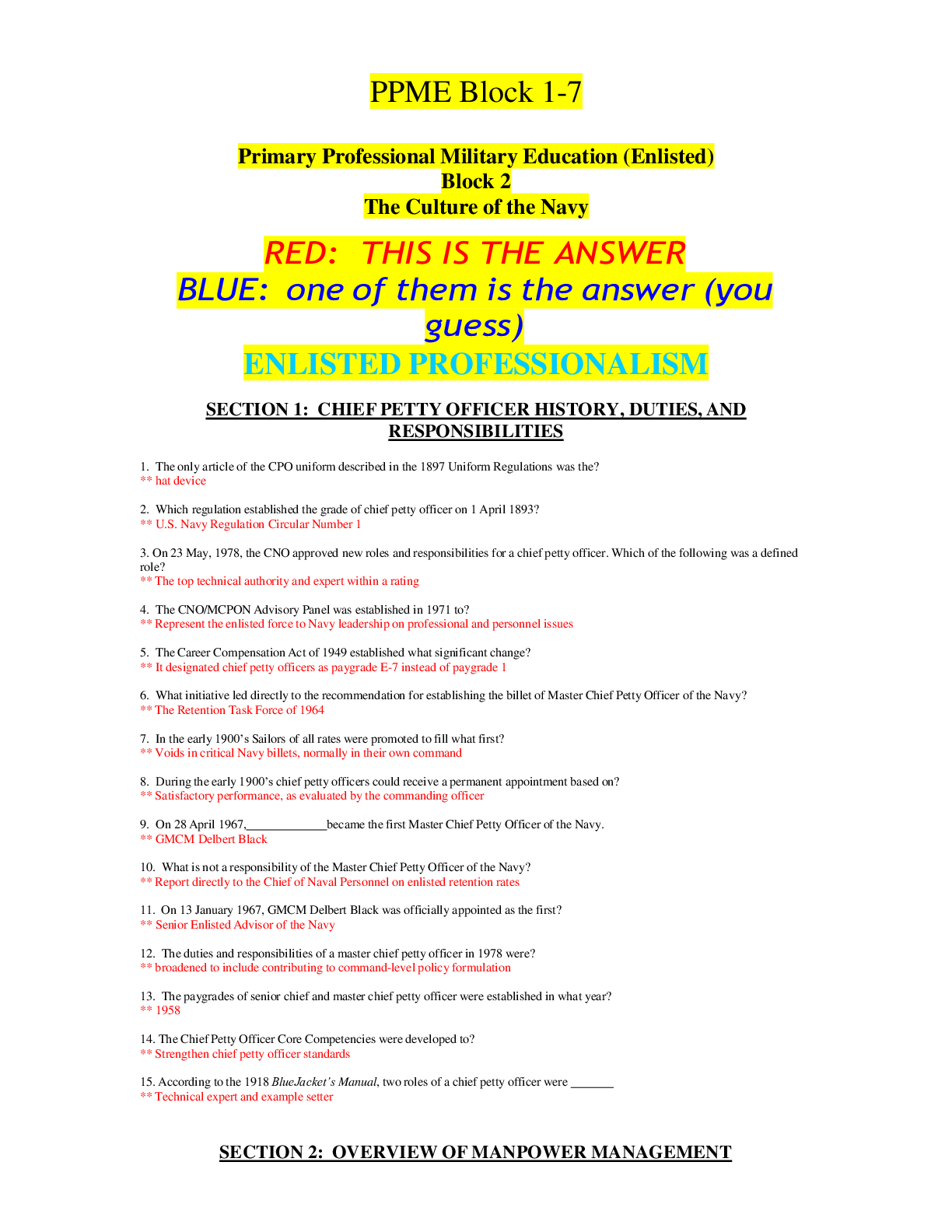
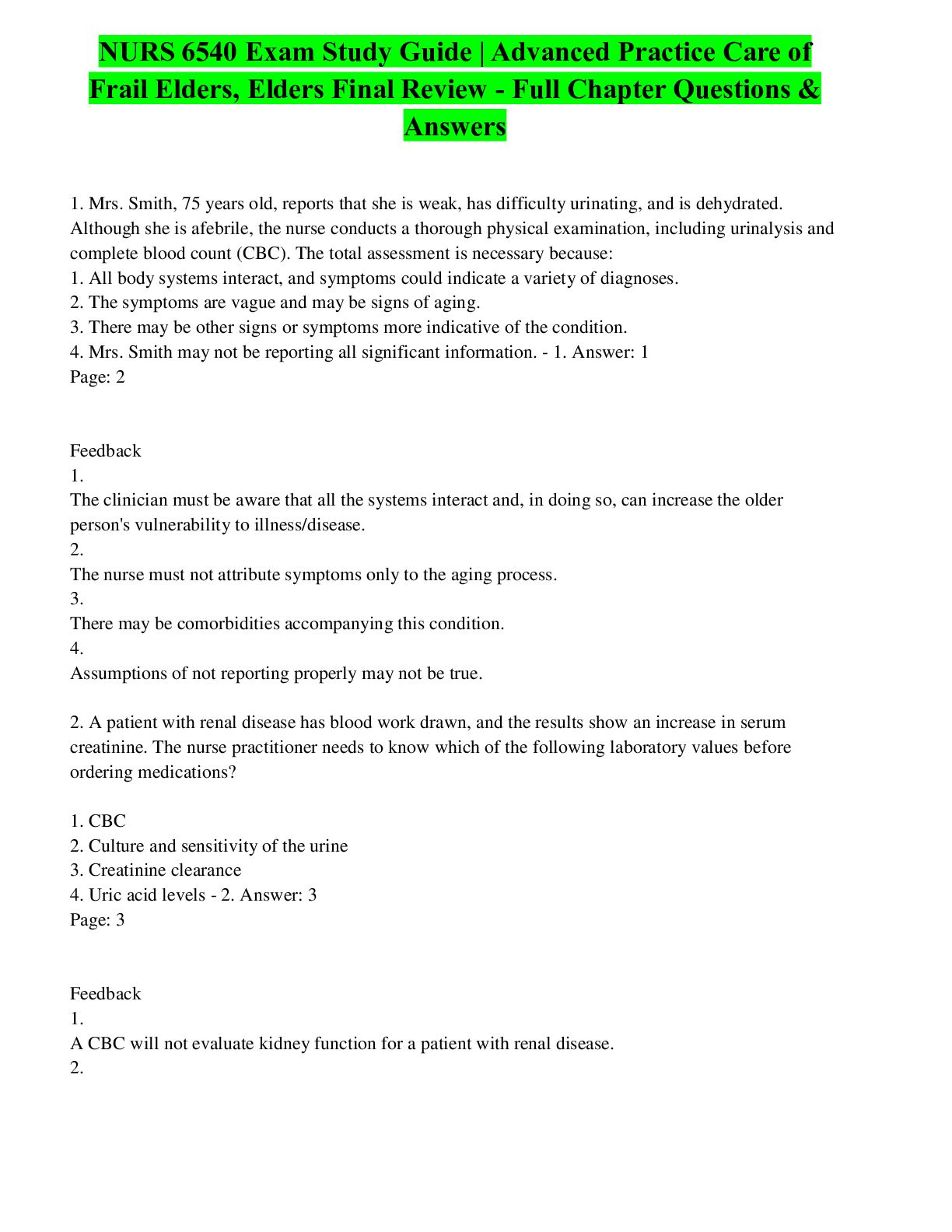

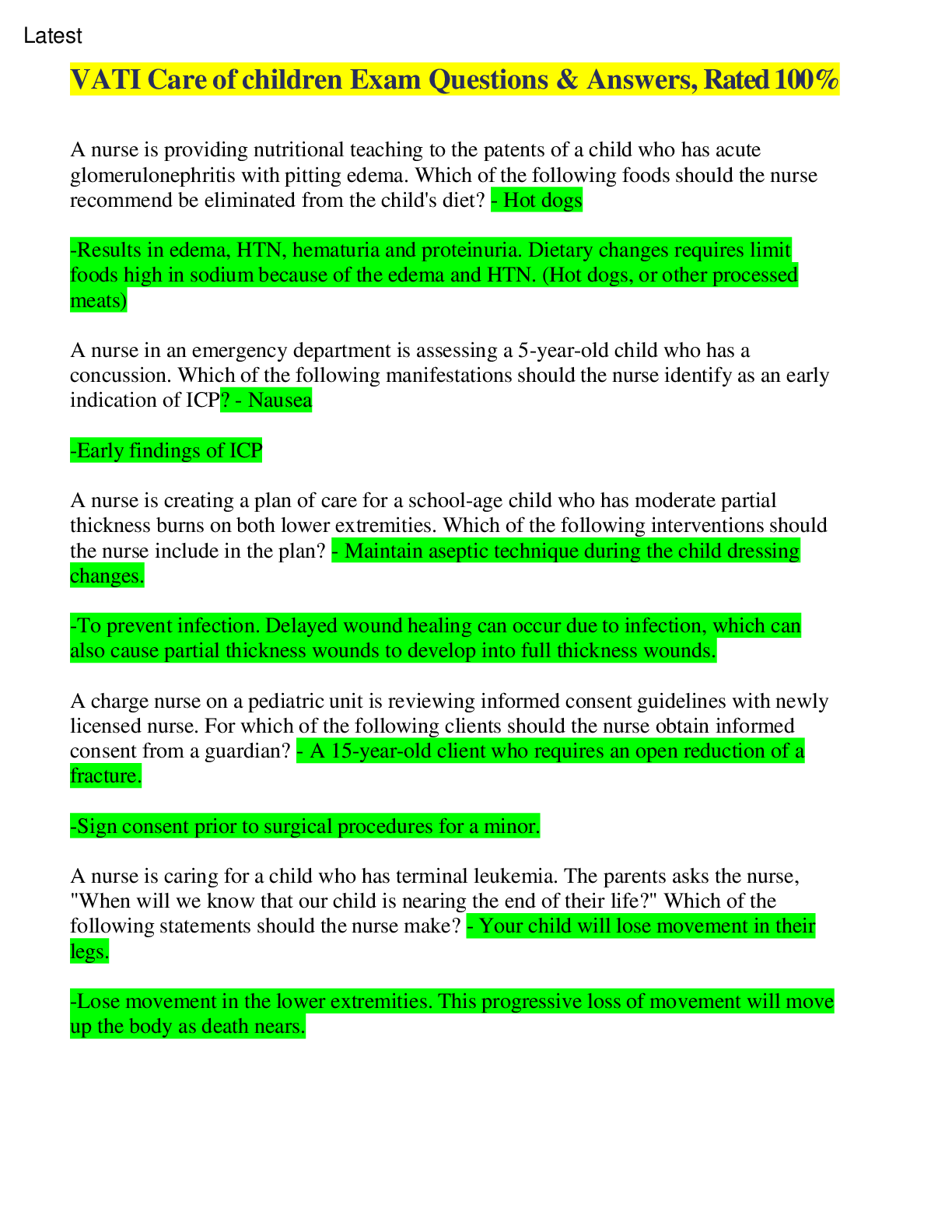
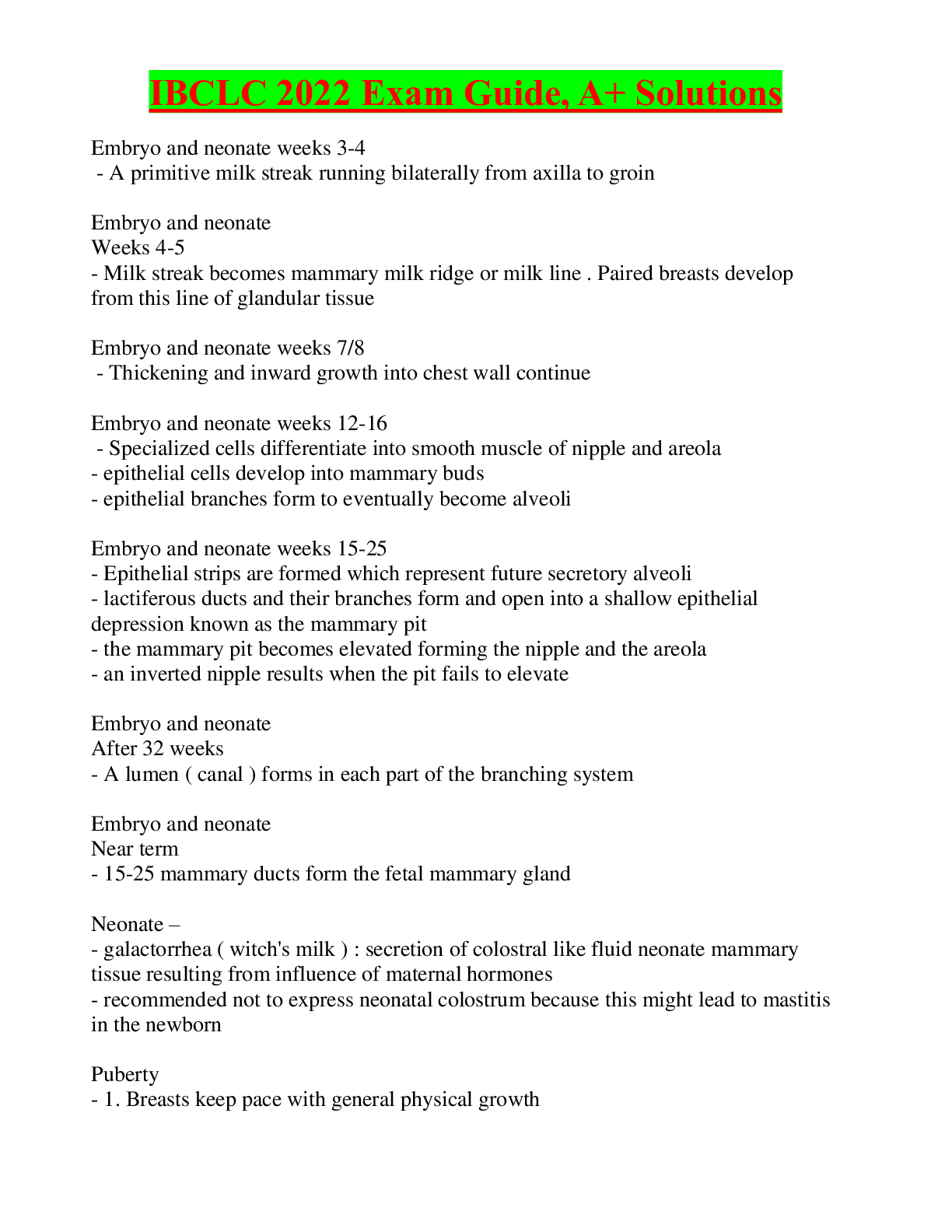
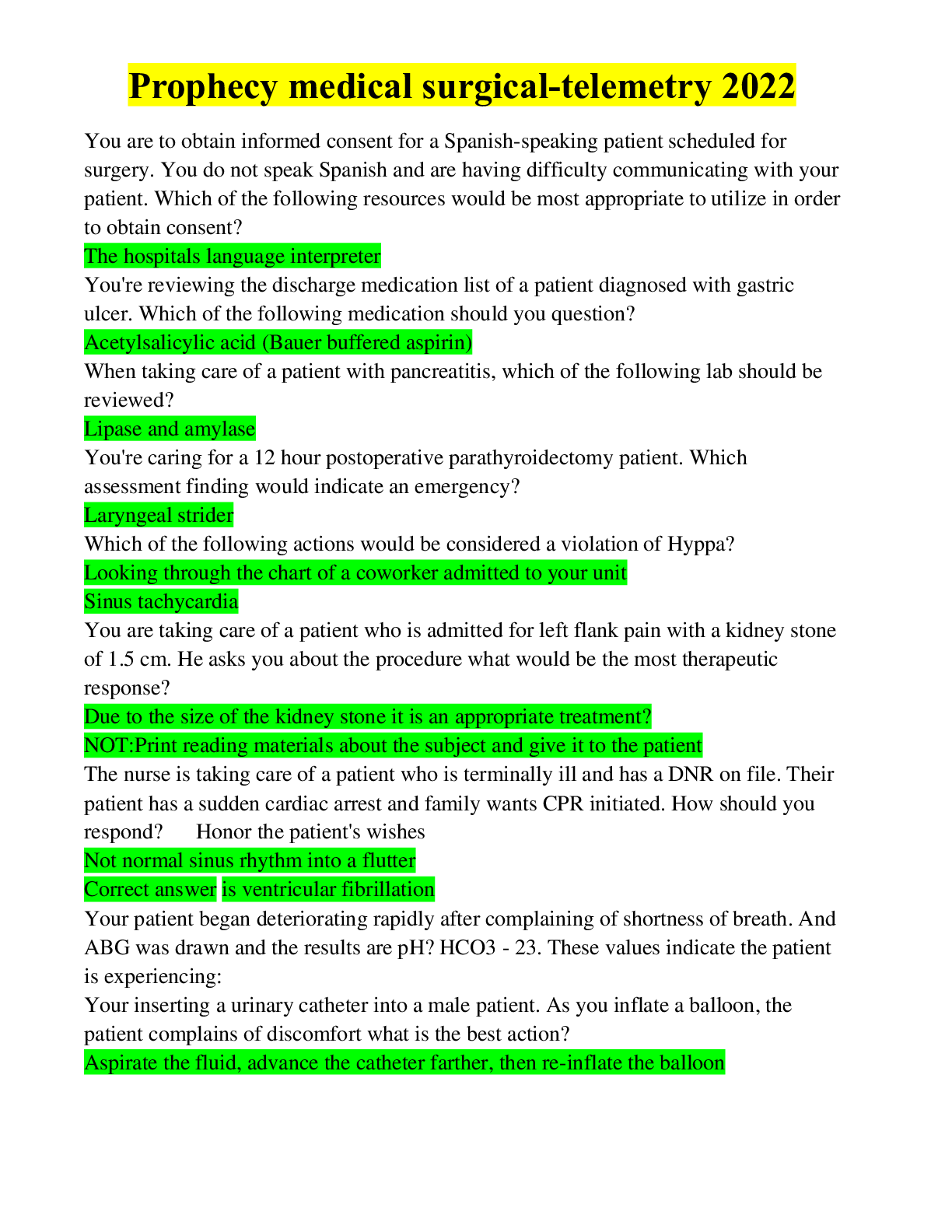
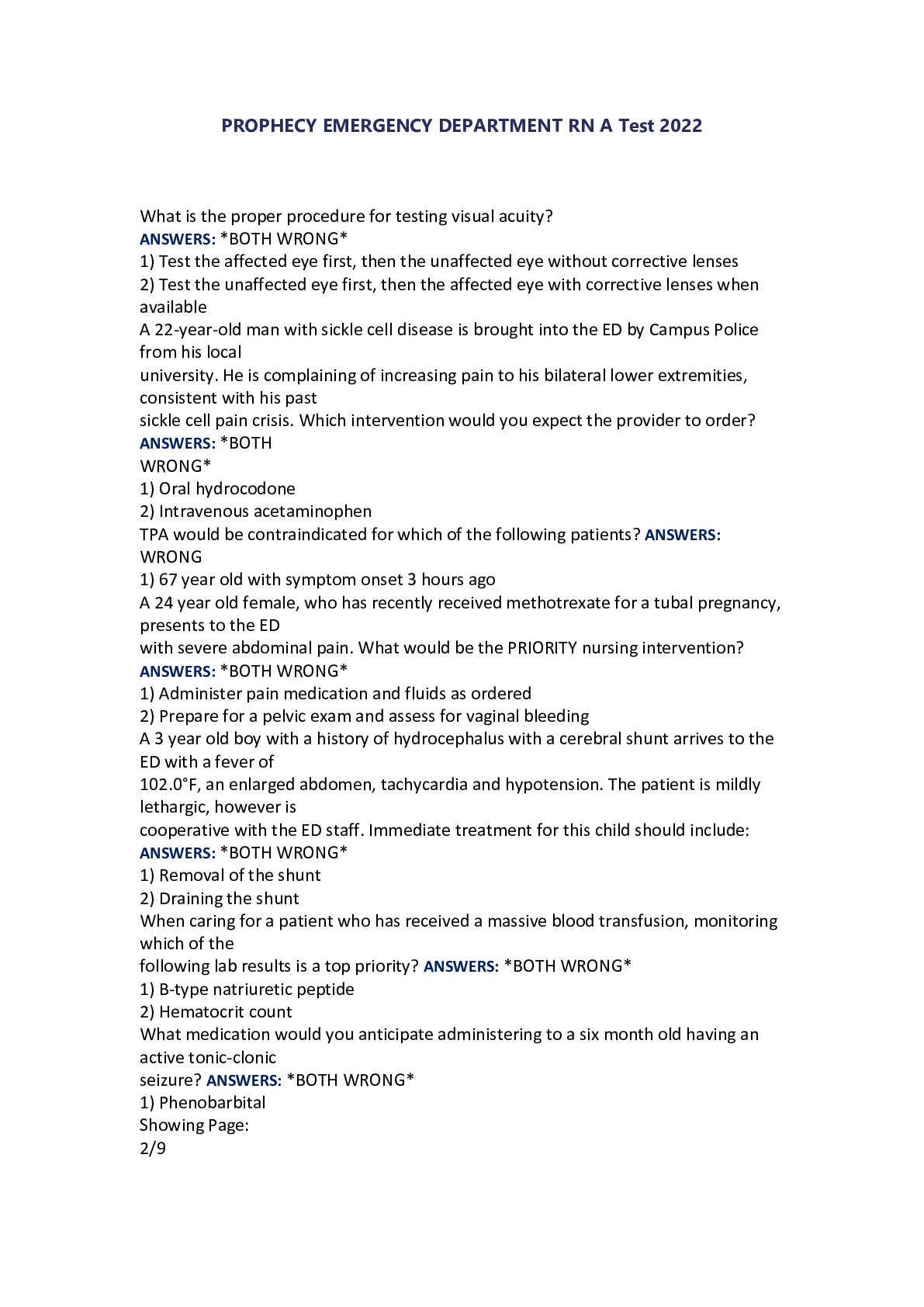









.png)
